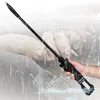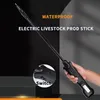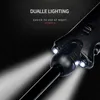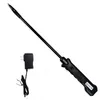Choosing the perfect water bowl for your furry friend can be a daunting task. This article will guide water bowl consumers, discussing different materials commonly used to make water bowls, including their pros and cons. It emphasizes the importance of choosing the right size of the water bowl, which depends on the pet’s size and breed. The article also explores various shapes of water bowls available in the market, outlining their benefits and letting consumers decide which one fits their pet’s needs best. Hygiene is crucial when it comes to pet water bowls. As such, the article provides tips on how to clean them and mentions different types of water bowls that are easy to clean. Lastly, it highlights additional features like anti-slip bottoms, spill-proof designs, or automatic refill systems, which can make a pet owner’s life easier while keeping their furry friends healthy and hydrated.





Consider the Material
One of the most popular materials for water bowls is stainless steel. Stainless steel bowls are durable, resistant to rust and corrosion, and easy to clean. They also don’t retain odors or flavors, making them a great choice for pets with sensitive noses or taste buds. However, stainless steel bowls can be noisy when pets bump into them or drag them across the floor, and they may also become hot if left in direct sunlight.
Another common material for water bowls is plastic. Plastic bowls are lightweight, inexpensive, and come in a wide range of colors and designs. However, they can easily develop scratches and cracks, which can harbor bacteria and make them difficult to clean. Some plastic bowls may also contain harmful chemicals that can leach into your pet’s water over time.
Ceramic bowls are another option for pet owners. These bowls are heavy and stable, making them difficult for pets to tip over. They also come in a variety of decorative designs to complement any home decor. However, ceramic bowls can chip or break if dropped, and they may not be as easy to clean as stainless steel or plastic bowls.
For pet owners who are concerned about the environmental impact of their pet’s accessories, there are also water bowls made from sustainable materials such as bamboo or recycled glass. These bowls are eco-friendly and often biodegradable, making them a great choice for environmentally conscious pet owners. However, they may not be as durable as bowls made from traditional materials, and they may be more expensive as well.
When choosing a material for your pet’s water bowl, it’s important to consider your pet’s specific needs and habits. For example, if you have a large dog who tends to be rough with his belongings, a stainless steel bowl may be the best option. On the other hand, if you have a small, delicate cat, a ceramic or bamboo bowl may be more suitable.
Size Matters
As pet owners, we all want to ensure that our furry friends are healthy and happy. One of the essential components of your pet’s health is ensuring they have access to clean water at all times. However, choosing the right water bowl is equally as important. The size of the water bowl can impact your pet’s health and well-being in ways you may not have considered.
The Size Depends on Your Pet’s Breed and Size
When it comes to water bowls, one size does not fit all. The size of the water bowl should depend on your pet’s breed and size. Smaller dogs or cats will require a smaller water bowl, while larger breeds will need a more substantial water container. The rule of thumb is to choose a bowl that is big enough to hold enough water for your pet to drink throughout the day without needing frequent refills.
For instance, if you have a small dog breed like a Chihuahua or Pomeranian, a 12-ounce water bowl will suffice. For medium-sized breeds, such as Beagles or Border Collies, a 24-ounce water bowl is ideal. Large breeds like Great Danes and Saint Bernards will need a water bowl that can hold up to 64 ounces of water.
Tips for Choosing the Right Water Bowl
Apart from considering your pet’s size and breed, there are other factors to consider before purchasing a water bowl. Here are some tips to help you make an informed decision:
1. Material: Choose a bowl made from stainless steel, ceramic, or glass. These materials are non-porous, which means they are less likely to harbor bacteria compared to plastic bowls.
2. Height: If your pet has joint issues or is aging, consider getting an elevated water bowl. Elevated water bowls reduce stress on joints and muscles and improve digestion.
3. Location: Place the water bowl in a quiet and easily accessible area of your home. Avoid placing the bowl near food or litter boxes as this can contaminate the water.
4. Cleaning: Make sure to clean the water bowl regularly to prevent the buildup of bacteria and other contaminants. Ideally, wash the bowl with soap and hot water every day, or run it through the dishwasher.
The Right Shape
Round water bowls are the most common shapes available in the market. Their versatility makes them ideal for various domestic pets and spaces. Round bowls do not take up much space, making them easy to store and fit into small areas. They also come in different sizes to cater to pets’ drinking requirements, and their smooth edges make them safe for pets to drink from without injuring themselves.
Square water bowls have become increasingly popular due to their unique design. Unlike round bowls, they take up less space while still providing ample water capacity for pets. Their sleek design enhances the visual appeal of any room or outdoor space. Additionally, square bowls are not as prone to tipping over, ensuring that pets have a continuous supply of clean water.
Raised water bowls are designed to elevate a pet’s feeding experience. With the bowl raised from the ground, pets can comfortably drink water without straining their necks or back. Raised bowls work well for elderly or disabled pets who may struggle to reach the floor. The elevation also helps prevent water spilling on the floor and reduces the risk of contamination by keeping the bowl further away from any dirt or debris.
Easy to Clean
Hygiene should be a top priority when it comes to pet care. This means that pet owners must clean their pet’s water bowls regularly. A good rule of thumb is to clean them once a day if possible, but at least once a week. The easiest way to clean the water bowl is by using hot soapy water and a dish brush. Make sure to rinse the bowl thoroughly before refilling it with fresh water. It’s also recommended to use a separate sponge or brush for cleaning your pet’s food and water bowls.
Another tip for maintaining the cleanliness of your pet’s water bowl is to place it in an easily accessible area where it won’t be knocked over. Pets tend to spill their water, especially if they are excited or playful. By placing the water bowl in an area with limited foot traffic, you reduce the chances of it being spilled or contaminated.
In addition to regular cleaning, choosing the right type of water bowl can also make cleaning much easier. Stainless steel bowls are a popular choice because they are durable, dishwasher safe, and easy to sanitize. Ceramic bowls are another option, but they may require more attention since they can chip or crack over time. Plastic bowls are generally not recommended as they can scratch easily, leading to bacteria growth.
There are also self-cleaning water bowls available on the market that use filters to keep the water fresh and clean. These bowls typically have a removable reservoir and filter for easy cleaning. While they may be more expensive, they can save pet owners a lot of time in the long run.
Additional Features
Anti-slip bottoms are an important feature that many pet owners look for in water bowls. This is especially important for pets who tend to spill their water bowls or knock them over. A bowl with an anti-slip bottom will stay in place even if your pet accidentally bumps into it. This means that you won’t have to worry about cleaning up spills or refilling the bowl every time it gets knocked over. Furthermore, this feature ensures that your pet has access to water at all times, even when you’re not around to refill their bowl.
Spill-proof designs are also a popular feature among pet owners. These bowls are designed to prevent spills and splashes, which can be a common problem with regular water bowls. A spill-proof design ensures that even if your pet accidentally knocks over their bowl or spills water while drinking, the water won’t spill all over the floor. This means that you won’t have to worry about slip hazards or damage to your floors.
Automatic refill systems are another convenient feature that many pet owners appreciate. These systems are designed to automatically refill your pet’s water bowl as it empties. This means that you won’t have to worry about constantly checking and refilling the bowl. Automatic refill systems are particularly useful for busy pet owners who don’t have the time to constantly monitor their pet’s water intake.
In conclusion, additional features in water bowls can make a significant difference in a pet owner’s life. Anti-slip bottoms, spill-proof designs, and automatic refill systems are just a few examples of features that can make your life easier while ensuring that your pet stays hydrated and healthy. When purchasing a water bowl for your pet, consider these additional features to make the most out of your investment. Ultimately, keeping your pet hydrated is essential for their health and wellbeing, and additional features in their water bowl can help make this task easier and more efficient.
FAQ
Q1. What factors should I consider when choosing a water bowl for my pet?
When choosing a water bowl for your pet, it’s important to consider the material, size, and design. The material should be safe and non-toxic, such as stainless steel or ceramic. The size of the bowl should be appropriate for your pet’s breed and size, with larger breeds requiring bigger bowls. Additionally, consider the design of the bowl, ensuring it is stable and spill-proof.
Q2. What are the advantages of using a stainless steel water bowl for my pet?
Stainless steel water bowls are a popular choice for pet owners due to their durability, resistance to bacteria, and ease of cleaning. They are also non-porous, making them less likely to harbor harmful germs and odors. Additionally, stainless steel bowls are generally more stable and resistant to tipping, making them a safer option for pets.
Q3. How do I know if my pet needs a raised water bowl?
Raised water bowls can be beneficial for pets with certain medical conditions, such as arthritis or neck or back problems. The elevated position of the bowl can make it easier for pets to drink without straining their neck or spine. Additionally, raised bowls can help prevent bloating in larger dog breeds by reducing the amount of air they swallow while drinking.
Q4. Can the color of a water bowl affect my pet’s drinking habits?
Some pets may have preferences for certain colors, which can influence their drinking habits. For example, some animals may be more attracted to bright colors, while others may prefer more neutral tones. It’s important to observe your pet’s behavior and adjust the color of the water bowl accordingly to encourage regular hydration.
In conclusion, choosing the right water bowl for your pet involves considering factors such as material, size, design, and even color. By selecting a bowl that meets your pet’s specific needs, you can ensure they stay hydrated and healthy.
